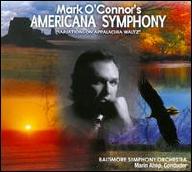Baltimore Symphony Orchestra
from Baltimore, MD
formed
February 11, 1916 (age 109)
Biography
The Baltimore Symphony Orchestra was established as a municipal ensemble with funding from local government agencies. The orchestra's first concert took place at the Lyric Theatre on February 11, 1916; its players were mostly local musicians joined by a few members of the Philadelphia Orchestra. Gustav Strube was appointed the group's first musical director in 1917. During his 13-year tenure, the number of concerts gradually increased, children's concerts were established in 1924, and several famous artists and guest conductors were attracted, including Siegfried Wagner, son of the composer. Strube's departure in 1930 resulted in a period of uncertainty for the orchestra, worsened by the national depression. His successor was George Siemonn, who worked vigorously for increased municipal funding and for the introduction of new compositions at concerts. He also conducted the orchestra's historic first radio broadcast concerts. Ernest Schelling was appointed music director in 1935 and became the first BSO conductor to lead a performance of Handel's Messiah during Christmas week. Werner Janssen was appointed music director in 1937 and was succeeded by Harold Barlow in 1939, but neither of these two conductors could overcome the financial and morale problems plaguing the orchestra. In 1942, the director of Baltimore's Peabody Conservatory, Reginald Stewart, was appointed music director. By 1945, with the help of Eleanor Roosevelt and Met star Rosa Ponselle, the orchestra's size was increased to 90 members, its schedule of concerts expanded, and its repertory broadened. By the early 1950s, however, deficits and other problems precipitated Stewart's resignation and the departure of several orchestra members. Italian conductor Massimo Freccia took the reins in 1952 and immediately set diligently to work for solutions to the many difficulties facing the orchestra. He often presented concert versions of operas and conducted other large-scale works, drawing in sizable audiences. Peter Herman Adler succeeded Freccia in 1959. In 1964, the orchestra began performing with the Baltimore Civic Opera Company. Romanian-born Sergiu Comissiona was appointed music director in 1968 by philanthropist Joseph Meyerhoff, president of the symphony orchestra organization. These two figures guided the orchestra to some of its greatest artistic triumphs, as well as to financial stability over the next decade and a half. Comissiona made numerous recordings with the orchestra and led many successful tours abroad. Meyerhoff donated $10.5 million toward the construction of a new hall, and the orchestra gave its first concert in Meyerhoff Symphony Hall on September 16, 1982. American David Zinman was appointed music director in 1985 and maintained the high standards set during the Comissiona era. He also made numerous recordings, and the orchestra began regular radio broadcasts in 1986. Zinman and the BSO won several Grammy awards, the first in 1987 in a collaborative effort with Yo-Yo Ma featuring cello concertos by Britten and Barber. Russian conductor Yuri Temirkanov succeeded Zinman in 1999. Temirkanov and the orchestra were frequently heard on NPR's Performance Today and regularly made recordings. When Marin Alsop took over leadership in 2007, she became the first woman to serve as music director of a major American orchestra., Rovi
Top Tracks
Albums
Videos
Close














